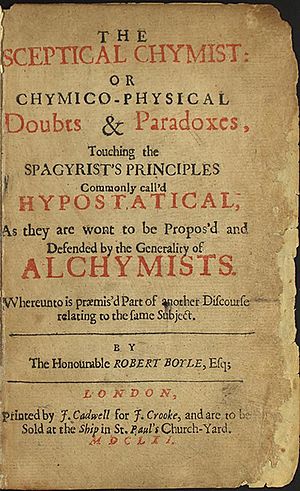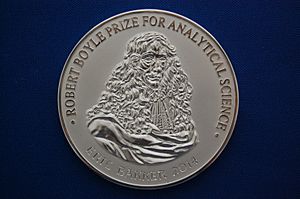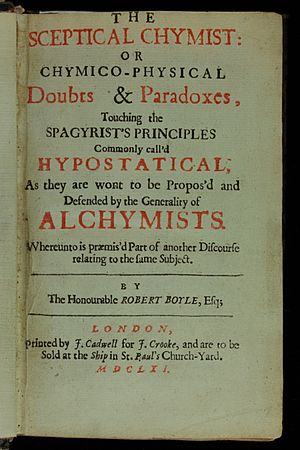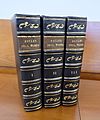Robert Boyle facts for kids
Quick facts for kids
Robert Boyle
|
|
|---|---|

Robert Boyle (1627–91)
|
|
| Born | 25 January 1627 |
| Died | 31 December 1691 (aged 64) |
| Known for | Boyle's law, founder of modern chemistry |
| Awards | Fellow of the Royal Society |
| Scientific career | |
| Fields | Physics, chemistry |
| Influences | Robert Carew, Galileo Galilei, Otto von Guericke, Francis Bacon |
| Influenced | Considered the founder of modern chemistry |
Robert Boyle FRS (25 January 1627 – 31 December 1691) was a 17th-century natural philosopher, chemist, physicist, inventor and founding member of the Royal Society.
Boyle was born in Ireland to a titled Anglo-Irish family. He was the fourteenth child of Richard Boyle, 1st Earl of Cork, who had arrived in Ireland in 1588.
Contents
Biography
Early years
Boyle was born at Lismore Castle, in County Waterford, Ireland, the seventh son and fourteenth child of The 1st Earl of Cork ('the Great Earl of Cork') and Catherine Fenton. Lord Cork, then known simply as Richard Boyle, had arrived in Dublin from England in 1588 during the Tudor plantations of Ireland and obtained an appointment as a deputy escheator. He had amassed enormous wealth and landholdings by the time Robert was born, and had been created Earl of Cork in October 1620. Catherine Fenton, Countess of Cork, was the daughter of Sir Geoffrey Fenton, the former Secretary of State for Ireland, who was born in Dublin in 1539, and Alice Weston, the daughter of Robert Weston, who was born in Lismore in 1541.
As a child, Boyle was raised by a wet nurse, as were his elder brothers. Boyle received private tutoring in Latin, Greek, and French and when he was eight years old, following the death of his mother, he, and his brother Francis, were sent to Eton College in England. His father's friend, Sir Henry Wotton, was then the provost of the college.
During this time, his father hired a private tutor, Robert Carew, who had knowledge of Irish, to act as private tutor to his sons in Eton. However, "only Mr. Robert sometimes desires it [Irish] and is a little entered in it", but despite the "many reasons" given by Carew to turn their attentions to it, "they practice the French and Latin but they affect not the Irish". After spending over three years at Eton, Robert travelled abroad with a French tutor. They visited Italy in 1641 and remained in Florence during the winter of that year studying the "paradoxes of the great star-gazer" Galileo Galilei, who was elderly but still living in 1641.
Middle years
Robert returned to England from continental Europe in mid-1644 with a keen interest in scientific research. His father, Lord Cork, had died the previous year and had left him the manor of Stalbridge in Dorset as well as substantial estates in County Limerick in Ireland that he had acquired. Robert then made his residence at Stalbridge House, between 1644 and 1652, and settled a laboratory where he conducted many experiments. From that time, Robert devoted his life to scientific research and soon took a prominent place in the band of enquirers, known as the "Invisible College", who devoted themselves to the cultivation of the "new philosophy". They met frequently in London, often at Gresham College, and some of the members also had meetings at Oxford.
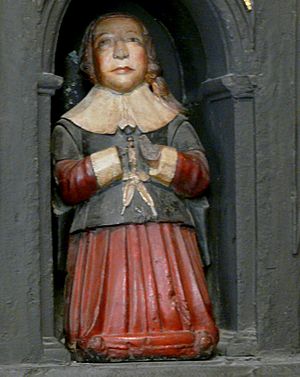
Having made several visits to his Irish estates beginning in 1647, Robert moved to Ireland in 1652 but became frustrated at his inability to make progress in his chemical work. In one letter, he described Ireland as "a barbarous country where chemical spirits were so misunderstood and chemical instruments so unprocurable that it was hard to have any Hermetic thoughts in it."
In 1654, Boyle left Ireland for Oxford to pursue his work more successfully. An inscription can be found on the wall of University College, Oxford, the High Street at Oxford (now the location of the Shelley Memorial), marking the spot where Cross Hall stood until the early 19th century. It was here that Boyle rented rooms from the wealthy apothecary who owned the Hall.
Reading in 1657 of Otto von Guericke's air pump, he set himself, with the assistance of Robert Hooke, to devise improvements in its construction, and with the result, the "machina Boyleana" or "Pneumatical Engine", finished in 1659, he began a series of experiments on the properties of air and coined the term factitious airs. An account of Boyle's work with the air pump was published in 1660 under the title New Experiments Physico-Mechanical, Touching the Spring of the Air, and its Effects.
Among the critics of the views put forward in this book was a Jesuit, Francis Line (1595–1675), and it was while answering his objections that Boyle made his first mention of the law that the volume of a gas varies inversely to the pressure of the gas, which among English-speaking people is usually called Boyle's Law after his name. The person who originally formulated the hypothesis was Henry Power in 1661. Boyle in 1662 included a reference to a paper written by Power, but mistakenly attributed it to Richard Towneley. In continental Europe the hypothesis is sometimes attributed to Edme Mariotte, although he did not publish it until 1676 and was likely aware of Boyle's work at the time.
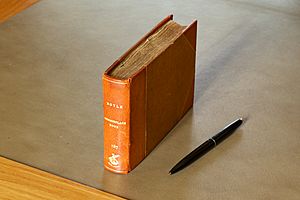
In 1663 the Invisible College became The Royal Society of London for Improving Natural Knowledge, and the charter of incorporation granted by Charles II of England named Boyle a member of the council. In 1680 he was elected president of the society, but declined the honour from a scruple about oaths.
He made a "wish list" of 24 possible inventions which included "the prolongation of life", the "art of flying", "perpetual light", "making armour light and extremely hard", "a ship to sail with all winds, and a ship not to be sunk", "practicable and certain way of finding longitudes", "potent drugs to alter or exalt imagination, waking, memory and other functions and appease pain, procure innocent sleep, harmless dreams, etc.". All but a few of the 24 have come true.
In 1668 he left Oxford for London where he resided at the house of his elder sister Katherine Jones, Lady Ranelagh, in Pall Mall. He experimented in the laboratory she had in her home and attended her salon of intellectuals interested in the sciences. The siblings maintained "a lifelong intellectual partnership, where brother and sister shared medical remedies, promoted each other's scientific ideas, and edited each other's manuscripts." His contemporaries widely acknowledged Katherine's influence on his work, but later historiographers dropped discussion of her accomplishments and relationship to her brother from their histories.
Later years
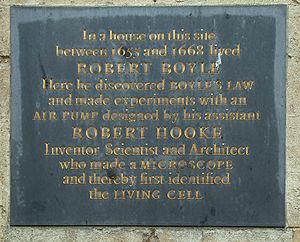
In 1669 his health, never very strong, began to fail seriously and he gradually withdrew from his public engagements, ceasing his communications to the Royal Society, and advertising his desire to be excused from receiving guests, "unless upon occasions very extraordinary", on Tuesday and Friday forenoon, and Wednesday and Saturday afternoon. In the leisure thus gained he wished to "recruit his spirits, range his papers", and prepare some important chemical investigations which he proposed to leave "as a kind of Hermetic legacy to the studious disciples of that art", but of which he did not make known the nature. His health became still worse in 1691, and he died on 31 December that year, just a week after the death of his sister, Katherine, in whose home he had lived and with whom he had shared scientific pursuits for more than twenty years. Boyle died from paralysis. He was buried in the churchyard of St Martin-in-the-Fields, his funeral sermon being preached by his friend, Bishop Gilbert Burnet. In his will, Boyle endowed a series of lectures that came to be known as the Boyle Lectures.
Career
Robert Boyle is best known for Boyle's law.
When Robert Hooke was young, Boyle employed him as an instrument-maker and assistant. They continued to cooperate when Hooke took charge of experiments at the Royal Society. Scientific research was the main focus of Boyle's life. He joined other like-minded men in a group which called itself the "Invisible College". He was part of the group which founded the Royal Society in 1660. Boyle was an alchemist, but also the first modern chemist. His 1661 book, The Sceptical Chymist, is important in the history of chemistry.
Religious interests
As a director of the East India Company Boyle spent large sums in promoting the spread of Christianity in the East. He contributed liberally to missionary societies and to the expenses of translating the Bible or portions of it into various languages. Boyle supported the policy that the Bible should be available in the language of the people, in contrast to the Latin-only policy of the Roman Catholic Church at the time.
Awards and honours
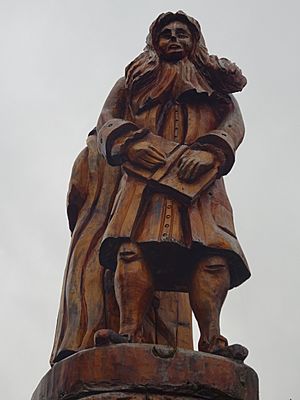
As a founder of the Royal Society, he was elected a Fellow of the Royal Society (FRS) in 1663. Boyle's law is named in his honour. The Royal Society of Chemistry issues a Robert Boyle Prize for Analytical Science, named in his honour. The Boyle Medal for Scientific Excellence in Ireland, inaugurated in 1899, is awarded jointly by the Royal Dublin Society and The Irish Times. Launched in 2012, The Robert Boyle Summer School organized by the Waterford Institute of Technology with support from Lismore Castle, is held annually to honor the heritage of Robert Boyle.
Important works
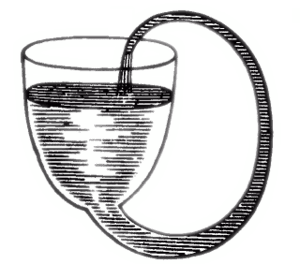
The following are some of the more important of his works:
- 1660 – New Experiments Physico-Mechanical: Touching the Spring of the Air and their Effects
- 1661 – The Sceptical Chymist
- 1662 – Whereunto is Added a Defence of the Authors Explication of the Experiments, Against the Obiections of Franciscus Linus and Thomas Hobbes (a book-length addendum to the second edition of New Experiments Physico-Mechanical)
- 1663 – Considerations touching the Usefulness of Experimental Natural Philosophy (followed by a second part in 1671)
- 1664 – Experiments and Considerations Touching Colours, with Observations on a Diamond that Shines in the Dark
- 1665 – New Experiments and Observations upon Cold
- 1666 – Hydrostatical Paradoxes
- 1666 – Origin of Forms and Qualities according to the Corpuscular Philosophy. (A continuation of his work on the spring of air demonstrated that a reduction in ambient pressure could lead to bubble formation in living tissue. This description of a viper in a vacuum was the first recorded description of decompression sickness.)
- 1669 – A Continuation of New Experiments Physico-mechanical, Touching the Spring and Weight of the Air, and Their Effects
- 1670 – Tracts about the Cosmical Qualities of Things, the Temperature of the Subterraneal and Submarine Regions, the Bottom of the Sea, &tc. with an Introduction to the History of Particular Qualities
- 1672 – Origin and Virtues of Gems
- 1673 – Essays of the Strange Subtilty, Great Efficacy, Determinate Nature of Effluviums
- 1674 – Two volumes of tracts on the Saltiness of the Sea, Suspicions about the Hidden Realities of the Air, Cold, Celestial Magnets
- 1674 – Animadversions upon Mr. Hobbes's Problemata de Vacuo
- 1676 – Experiments and Notes about the Mechanical Origin or Production of Particular Qualities, including some notes on electricity and magnetism
- 1678 – Observations upon an artificial Substance that Shines without any Preceding Illustration
- 1680 – The Aerial Noctiluca
- 1682 – New Experiments and Observations upon the Icy Noctiluca (a further continuation of his work on the air)
- 1684 – Memoirs for the Natural History of the Human Blood
- 1685 – Short Memoirs for the Natural Experimental History of Mineral Waters
- 1686 – A Free Enquiry into the Vulgarly Received Notion of Nature
- 1690 – Medicina Hydrostatica
- 1691 – Experimenta et Observationes Physicae
Among his religious and philosophical writings were:
- 1648/1660 – Seraphic Love, written in 1648, but not published until 1660
- 1663 – Some Considerations Touching the Style of the H[oly] Scriptures
- 1664 – Excellence of Theology compared with Natural Philosophy
- 1665 – Occasional Reflections upon Several Subjects, which was ridiculed by Swift in Meditation Upon a Broomstick, and by Butler in An Occasional Reflection on Dr Charlton's Feeling a Dog's Pulse at Gresham College
- 1675 – Some Considerations about the Reconcileableness of Reason and Religion, with a Discourse about the Possibility of the Resurrection
- 1687 – The Martyrdom of Theodora, and of Didymus
- 1690 – The Christian Virtuoso
Images for kids
See also
 In Spanish: Robert Boyle para niños
In Spanish: Robert Boyle para niños


